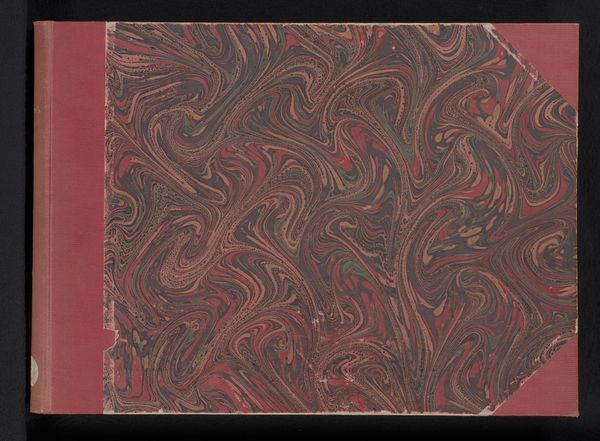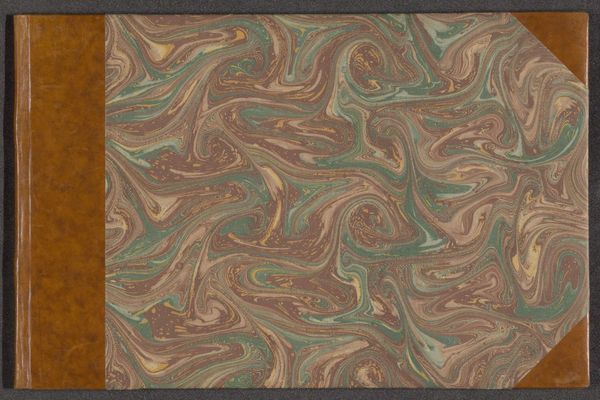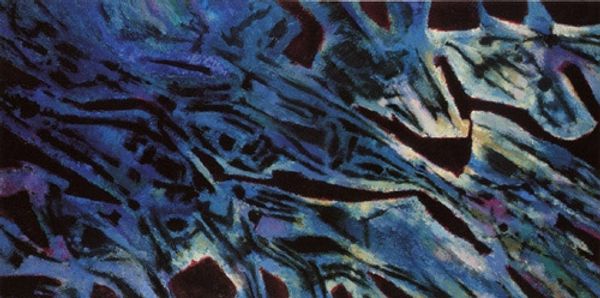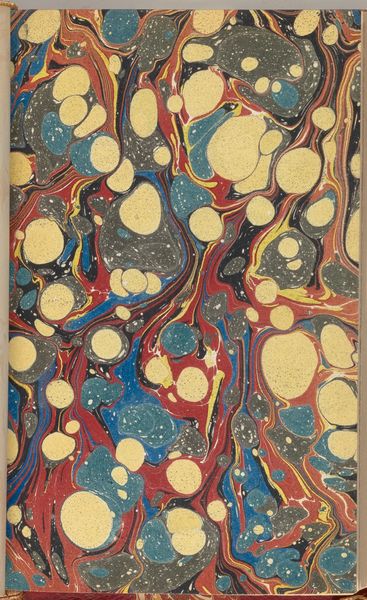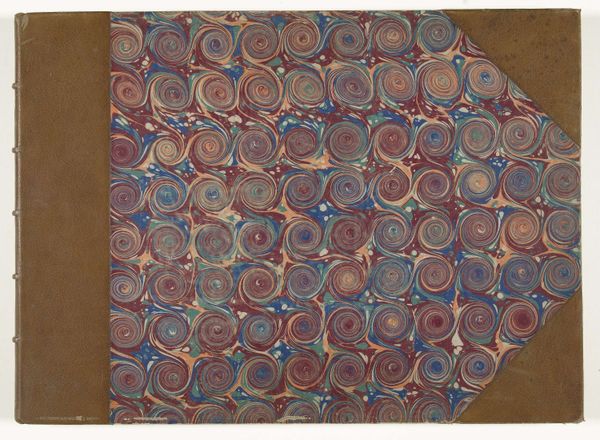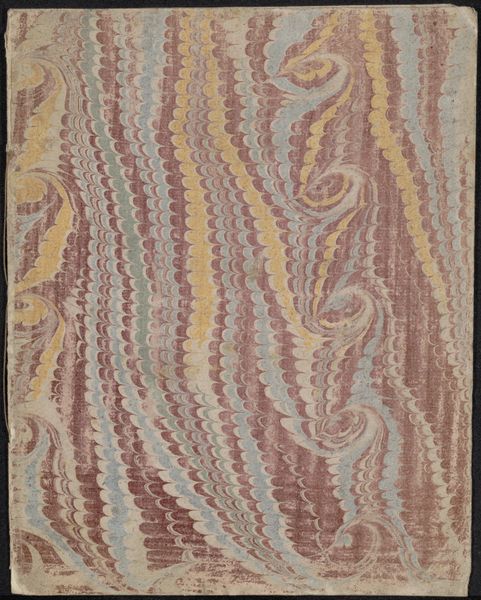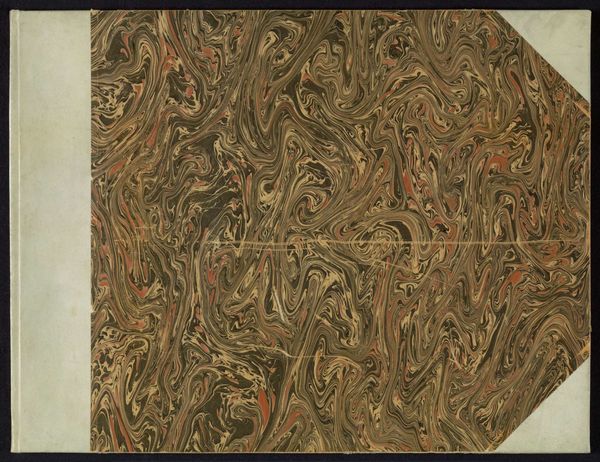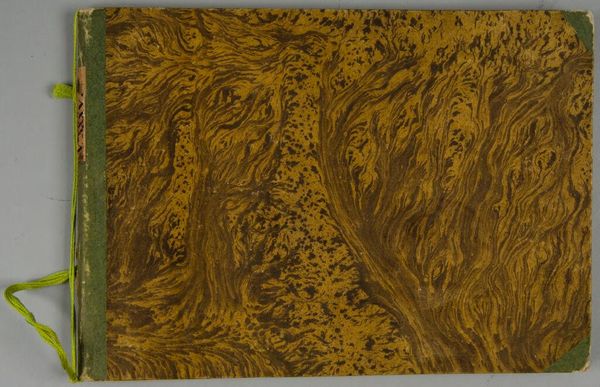
Album met voorstellingen van de tuinen van Paleis Het Loo Possibly 1789 - 1899
0:00
0:00
laurensscherm
Rijksmuseum
mixed-media, paper
#
mixed-media
#
naturalistic pattern
#
organic
#
abstract painting
#
paper
#
geometric pattern
#
abstract pattern
#
organic pattern
Dimensions: height 205 mm, width 294 mm, thickness 10 mm, width 591 mm
Copyright: Rijks Museum: Open Domain
Editor: Here we have “Album met voorstellingen van de tuinen van Paleis Het Loo,” dating anywhere from 1789 to 1899. It’s a mixed-media piece on paper, residing at the Rijksmuseum. I'm really struck by the swirling, almost dizzying effect of the repeated patterns. What do you see in this piece? Curator: This marbling, beyond its aesthetic qualities, speaks to a whole network of artisanal labor. Consider the paper itself: its production, its treatment. The pigment mixtures, the very tools used to create these swirling patterns - all point towards a social history embedded in the object's making. Who were these artisans? What were their working conditions? Were there particular guilds involved in the marbled paper process, like specific paper mills? Editor: I never really thought about the social implications behind a marbled cover. How did they even get these colours to swirl together like this? Curator: The 'how' is central to my understanding. The process itself would involve floating pigments on a viscous liquid, then carefully manipulating them, perhaps with combs or styluses, before laying the paper down to lift the design. This act of transferring something floating, almost ephemeral, onto a solid form underscores art not as divine intervention, but as craft. This isn't "high art," in the traditional sense, is it? The question here is why was this specific marbling technique chosen for THIS album. What does that say about the relationship between bookbinding, status and even consumption? Editor: So, it's about understanding art through the lens of its production. Is it fair to look at this in relation to contemporary issues like sustainability, when selecting the materials themselves is a statement? Curator: Precisely. And looking into issues surrounding consumption allows us to read between the aesthetic lines and see the fingerprints of the labourers who conceived and constructed this particular medium for expression. Editor: This really makes you appreciate the sheer level of craftsmanship involved and consider the lives of the people who created this artwork. Curator: Indeed! It takes us beyond merely observing beauty to critically analyzing art as a product of human activity and culture.
Comments
No comments
Be the first to comment and join the conversation on the ultimate creative platform.

